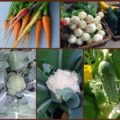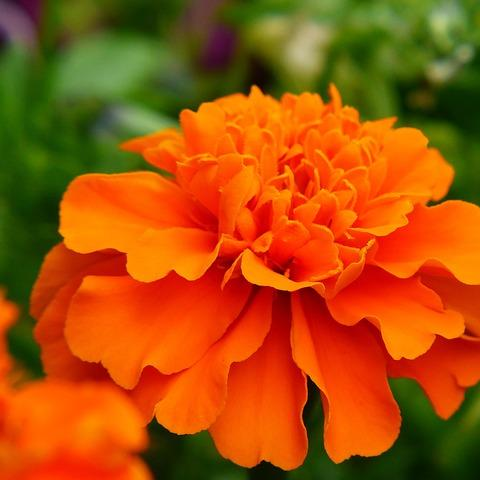Posts on Happily Homegrown contain affiliate links. When you make a purchase through an affiliate link, your price will be the same, but Happily Homegrown will receive a small commission. Thank you for your support!
The new year means that it is time to reflect and plan for the future. Now that we have been on our current property for 3 years, I can’t help but wonder, “What lessons does this year have to teach me about having a suburban homestead?”

Our Suburban Homestead
If you’ve been here for a while, you know that we are suburban homesteaders. Back in 2013, we put in our first fruit trees and gardens at our home in Morrisville, PA. Since then, we moved to a slightly larger property (still under a half-acre), moved my in-laws in with us, and have started over with the suburban homestead, this time in Trevose, PA.
I said I wanted to live in a small town, but this isn’t exactly what I meant. I should be more specific when I put things out into the universe.
Over the last three years, we have worked towards getting the gardens all up and running. Our first-year garden was in the spring of 2020. You can imagine what challenges that brought since we started building that first garden in March … you get the picture.
The next two years brought varied amounts of success. There were challenges in the actual growing of the garden but also in the ability to get supplies and resources. It has definitely been a learning experience even more so than the first six years at our Morrisville property.
So here I am at the start of 2023 wondering, “What lessons does this year have to teach me about having a suburban homestead?”
Considering a CSA
The last few years have been hard as I try to establish my gardens and get a good quality growing medium in place, compensating for 5 cubic yards of topsoil that was sold to us (and dropped off) as blended mushroom compost and I didn’t know enough to recognize an issue until it was too late.
Since the soil quality has reduced production, I am highly considering joining a CSA for the coming season.
A CSA, or community-supported agriculture, is where you purchase a share of a harvest from a farm in advance. Then throughout the growing season, you go to the farm on a regular schedule to pick up your portion of the harvest. Some CSA’s have a market format where you shop for the items you want each week, and others are a boxed share with your portion already picked and packaged up for you.
Years ago, we participated in two different CSAs in New Jersey. I am currently researching options close to where I live in Pennsylvania or even close to my mom in Jersey where it can be our weekly farm and tea date.
Having the CSA membership will mean that we have a guaranteed “harvest” each week from about May through September (or even later depending on the CSA) without having to do the physical work of tending those crops. It will also give us diversity in crops that we can’t get on such a small-scale garden at this point in time.
Another bonus, things like salad greens and squash which we have had bug issues with over the last few seasons can be acquired through the CSA instead and we can go a full season without giving those critters a foothold.
I will still have our Victory Garden, but now it will have a bit more flexibility and will hopefully be more fun as I recover from a few rough years.
A Backyard Orchard in Miniature
I have always wanted to have an orchard, and many people don’t think it is possible in the suburbs. For years, I have followed Brandy at The Prudent Homemaker and have been in awe of the amount of food, and more specifically fruit, she grows on her suburban property in Las Vegas. If she can grow that many fruit trees on her suburban property, then why can’t I?
Through a combination of espalier and growing little trees through pruning techniques, we currently have 9 fruit trees on our property with plans of adding at least 7 more!
The backyard orchard is one of a handful of big projects I want to focus on this year. The trees that are currently planted need to have their soil amended and then get a good layer of mulch before the heat of summer kicks in. But even before that, the trees need to be treated and pruned so that they are ready for bud swell in late winter.
There will be posts dedicated to growing a backyard orchard later in the year, and I look forward to sharing our progress with you.
Livestock on the Suburban Homestead
In an ideal world, I’d have acreage and room for all of the animals my heart desires. Laying hens and meat birds. Turkeys and guinea fowl. A pair of dairy goats. Heritage pigs. A dairy cow. And, for the cuteness factor, a miniature Scottish Highland Cow.
I have had dreams about that farm since I was a little girl playing with my neighbor Shannon and talking about how when we get big we were going to have a farm. My suburban homestead is as good as it gets for now, but we may be adding some critters for that real farm vibe.
My youngest, who am I kidding all of my kids, want rabbits. I do not want meat rabbits though, so the rabbits would just be a pet who gives us lots of amazing compost for the garden. Having had rabbits growing up, I know what is involved in the care. I don’t feel like it would be a huge undertaking but it is one that would require budgeting and planning before we jump in with both feet. We haven’t discussed this as a family yet, but it is at least on my radar so who knows what the coming year will bring.
Laying hens are the next big thing. My husband got on board with keeping hens last year, but with a few larger projects on the property that needed to be done first, it just went onto the back burner. Fast forward to November 2022 and eggs at the grocery store are topping $7 a dozen! Laying hens have just been moved up on the priority list.
In Morrisville, there were hens on almost every block. Backyard chickens were incredibly common. I learned a lot from our friends there, and have some ideas for what to do in our own yard. More importantly, I know who I can reach out to when I have questions or am in need of advice on what to do with the girls.
What’s the Buzz?
Well, that would of course be honey bees!
Honey bees aren’t livestock, but they are an integral part of the homestead. We do not have a plan for bees in 2023, but the research has begun! I’m hoping we can introduce a hive in mid-spring 2024.
Becoming More Self-Reliant
A homesteader is self-reliant. That means even if you are not on your 40-acre farm with all of the critters and a huge farm, you are doing what you can to rely on yourself and your family more and on industry less.
I have been keeping a list of projects and skills I’d like to learn in the coming year. The goal is to be more self-reliant in the future than we are today. I know that means baby steps, but forward is forward.
So that is where we are at …
It’s early January, and right now it’s all about planning and looking to the future while learning from what came before. What went well in the past? Has anything gone horribly wrong? What do we want to grow this year? What do we want to learn? In this season, what is important for our family?
Over the coming weeks, we will be making the final decisions on the CSA and hens. We will begin to plan the various projects. I’ll be inventorying my seed stash, and possibly hosting a seed swap. And most importantly, we will be establishing routines, budgets, and calendars to keep us focused throughout the remainder of the year.






 National Canning Day – October 23
National Canning Day – October 23
Leave a Reply